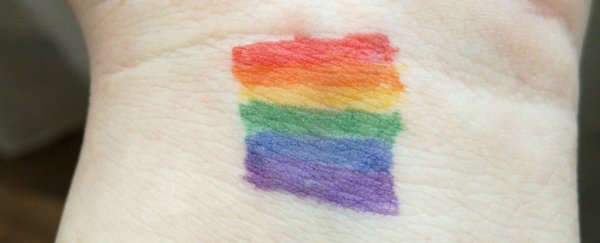Today the first guidelines specific to the health-care needs of transgender and gender diverse children and adolescents have been released in the Medical Journal of Australia.
Gender identity is a person's innermost sense of who they are – male, female, a blend of both or neither. Most children grow up thinking of themselves as a girl or a boy and don't question their gender. But some children and teenagers identify as a gender that's different to the sex they were assigned at birth. This is often referred to as being gender diverse, or transgender.
Being transgender or gender diverse is now largely viewed as part of the natural spectrum of human diversity. For some people, this is just part of who they are, and it's not a cause of concern. Others experience gender dysphoria – the distress related to the mismatch between one's sex and gender. It's the reason many seek help from health-care professionals.
Why the guidelines were needed
Our clinic is the largest paediatric gender service in Australia. In the last five years referrals to our service have increased tenfold. Rising referral rates have also been reported in many other countries across the Western world.
Although older international treatment guidelines exist, these are no longer fully reflective of current practices. They also focus on adults and not exclusively children and adolescents.
This is important because children and adolescents are continually developing in a social, emotional and physical sense. They also exist within the context of a family and school. So taking a developmental perspective is central to providing good care.
The new guidelines were developed in consultation with not only clinicians who work in the area of child and adolescent transgender health across Australia, but also members of the transgender community, their families, and relevant support organisations. And they draw on findings and recommendations from previous studies.
What they outline
Although more research is needed, we know supportive, gender affirming care during childhood and adolescence contributes to improved mental health and well-being.
As gender diversity is an unfamiliar area for many people, the guidelines include a list of commonly used terms. Language is rapidly evolving and people may use words in different ways. An important part of providing affirming and respectful care is to understand and use inclusive language. For example, when we see young people, we often ask what name and pronouns they would like used to build rapport and affirm their gender identity.
The guidelines also outline general principles for the care of transgender and gender diverse children and adolescents:
-
decisions about affirming a young person's gender identity should be driven primarily by the child or adolescent, in conjunction with their family and health-care providers
-
every child or adolescent who presents with concerns about their gender identity is unique and has their own individual needs. So the options for intervention appropriate for one person might not be helpful for another
-
"conversion" or "reparative" therapies - which attempt to change someone's gender identity to be more aligned with their sex assigned at birth - are strongly condemned.
The guidelines provide separate sections on providing care for children before and after puberty begins. This is important because the physical changes of puberty often trigger heightened distress, and support options differ.
The guidelines emphasise that providing gender-related health care to a young person requires many different approaches. This may include psychological support, social transition, voice and communication training, fertility counselling, hormonal intervention and surgery.
Many professionals may be involved, and the guidelines separately outline roles for mental health clinicians, paediatricians, endocrinologists, fertility specialists, nurses, speech therapists, GPs, bioethicists and lawyers.
But not all of these will be applicable to a given individual. It's important to remember many transgender and gender diverse young people will choose not to access gender-related health care at all.
As a relatively new endeavour, gender-related health care for children and adolescents is surrounded by myths and misinformation. Accessing reliable, up-to-date information can be challenging for clinicians, patients and families.
![]() We hope our guidelines ease this challenge and help young people access supportive, gender affirming care that helps them to lead happy and authentic lives.
We hope our guidelines ease this challenge and help young people access supportive, gender affirming care that helps them to lead happy and authentic lives.
Carmen Pace, Clinical Psychologist and Research Fellow, Murdoch Childrens Research Institute; Ken Pang, Clinician Scientist Fellow and Paediatrician, Murdoch Childrens Research Institute, and Michelle Tollit, Research Officer, Murdoch Childrens Research Institute.
This article was originally published on The Conversation. Read the original article.
Science AF is ScienceAlert's new editorial section where we explore society's most complex problems using science, sanity and humor.
